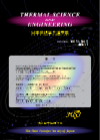巻号一覧

20 巻 (2012)
- 4 号 p. 51-
- 3 号 p. 35-
- 2 号 p. 15-
- 1 号 p. 1-
20 巻, 3 号
選択された号の論文の2件中1~2を表示しています
- |<
- <
- 1
- >
- >|
-
亀谷 雄樹, 花村 克悟2012 年 20 巻 3 号 p. 35-40
発行日: 2012年
公開日: 2012/08/10
ジャーナル フリーPreliminary study on catalytic methane decomposition was conducted by considering surface characteristics of carbon black. Catalytic activity test was carried out to evaluate catalytic activity of carbon black during methane decomposition. We investigated the effect of mass transfer on the methane decomposition rate through experiment and theoretical analysis, and demonstrated that there was no remarkable influence of mass transfer in our catalytic activity tests. Next we examined the variation in catalytic activity of two carbon black samples. We successfully described the variation of activity by introducing into the rate constant expression the modification coefficient that is a function of the mass ratio of deposited carbon to carbon black. In addition, we revealed that the local minima appeared in the modification coefficients of two samples could be uniquely described by the amount of deposited carbon per unit surface area of carbon black. We also demonstrated that the variation in surface area of carbon black during the initial stage of the reaction was in good agreement with that of a spherical particle, the volume of which increases with the mass ratio. The present results suggest that the initial behavior in catalytic activity of carbon black is well characterized by its initial surface area.抄録全体を表示PDF形式でダウンロード (937K) -
義岡 秀晃, 柳谷 竜登, 多田 幸生, 林 勇二郎2012 年 20 巻 3 号 p. 41-49
発行日: 2012年
公開日: 2012/08/10
ジャーナル フリーThe growth of mushy zone during solidification of supercooled melt is studied experimentally using Pb-Sn alloys casted in a cylinder mold. From the viewpoint of macro-micro link, changes of primary cell⁄dendrite arm spacing in the alloy are observed by varying supercooling degree. From the experiment, it is shown that the change of number of crystals in the mushy zone consists of a stage of quasi-stable growth, in which the number of crystals is maintained constantly, and a development stage of overgrowth, where the number of crystals decreases by competing⁄interfering with each other. Comparison of the experimentally measured primary spacing and the analytically predicted temperature and concentration fields suggests that the primary spacing is controlled by thermal diffusion during the free growth. The change of frequency distribution of the primary spacing is also investigated to discuss the history dependence of crystal growth. In conclusion, the mechanism of primary arm spacing selection in centripetal solidification is clarified in relation to temperature and concentration fields at the leading front of mushy zone and the history dependence of crystal growth.抄録全体を表示PDF形式でダウンロード (4990K)
- |<
- <
- 1
- >
- >|